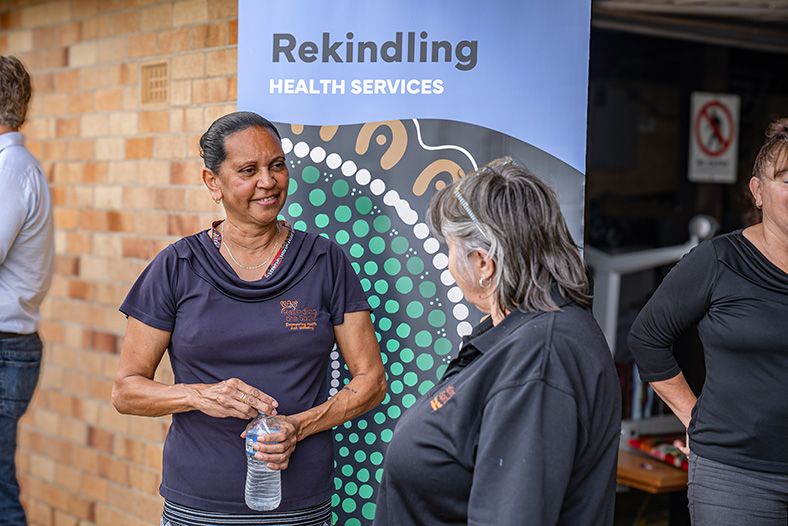Nearly 30 programs will share in $46.3 million to repair, restore and improve First Nations-owned social and cultural assets, directly damaged by floods in flood-impacted regions across New South Wales, through funding from the Albanese and Minns Governments.
The Aboriginal-owned Assets Program was open to 19 of the most flood-affected Local Government Areas, impacted in the February and June floods last year, through the Commonwealth-State Disaster Recovery Funding Arrangements (DRFA).
The program will enable Local Aboriginal Land Councils (LALCs), Aboriginal Corporations and Aboriginal and Torres Strait Islander community organisations to undertake repair, restoration and betterment of community infrastructure.
The 27 projects being funded include the restoration of Aboriginal-owned community centres and service buildings, playgrounds and recreation areas, and the rebuilding of access roads and walkways to areas of cultural significance directly damaged by floods, including:
- More than $6.9 million will fund two Rekindling the Spirit projects in the Lismore Local Government Area (LGA). These projects will support the restoration of damaged facilities, which provide critical social support, health support and counselling services. These two projects will deliver new facilities at the existing Lismore site and repair and provide additional infrastructure to an existing facility which was destroyed in the floods, allowing services to return to full capacity.
- More than $1.7 million to Tweed Byron LALC to restore the flood damaged “Walk on Water Track” in Tweed Shire LGA, providing access to cultural sites where schools and community groups often attend education activities.
- Almost $1.3 million to Tricketts Arch Aboriginal Corporation will reinstate safe vehicle access to the significant cultural site, Tricketts Arch, in the Oberon LGA, which includes a riverbank area, camping sites, a yarning circle and activity areas. Tricketts are committed to protecting the biodiversity of the land as well as its cultural and geodiversity.
The full list of successful projects is available here: www.nsw.gov.au/aboriginalownedassetsprogramlaunch
Assets will be rebuilt to withstand future natural disasters, as well as improve accessibility and inclusion for community members.
The Albanese and Minns Governments are continuing to help the long-term recovery of disaster-impacted Aboriginal communities and assisting them towards greater flood resilience, while also delivering positive economic and social outcomes.
Federal Minister for Emergency Management Murray Watt said:
“By improving the resilience of these assets, we can reduce the hardship experienced by First Nations communities during and after a disaster event, as well as decrease the cost of recovery in the future.
“We know these facilities are real hubs for the community – they bring people together while fulfilling cultural obligations and supporting self-determination.”
Minister for Regional NSW Tara Moriarty said:
“The Aboriginal-owned Assets Program is unlike anything the NSW Government has delivered before, providing targeted disaster assistance directly to Aboriginal-led or managed organisations for community infrastructure repairs.
“Working directly in partnership with Aboriginal people to develop an assistance program that directly addresses the recovery priorities of those communities most impacted is our commitment.
“Recovery is a long process and support will continue to ensure that no one in is left behind, particularly our most vulnerable.”
Minister for Aboriginal Affairs and Treaty David Harris said:
“This funding will bring welcome relief to communities who have been impacted and traumatised by the unprecedented flood events.
“It is great to see both levels of government working together to change the way we deal with natural disasters across NSW by planning to be better prepared and less exposed for future events.
“This significant investment will provide funding for the repair, restoration and betterment of Aboriginal owned and managed assets which will bring people together to sustain culture, support self-determination, and improve social connectedness and healing.
“This will help to make real changes for the community where it’s most needed.”
Minister for Emergency Services Jihad Dib said:
“We’ve seen first-hand how flood recovery efforts are progressing and it’s critical that we continue to support communities who have borne the brunt of the 2022 floods.
“This investment in cultural, social and recreational infrastructure will help bring people together and create a sense of belonging, identity, and community, once the work is complete.”

 Cr Nelmes said Santa agrees it’s the perfect time of year to visit the city and your local shops.
Cr Nelmes said Santa agrees it’s the perfect time of year to visit the city and your local shops.